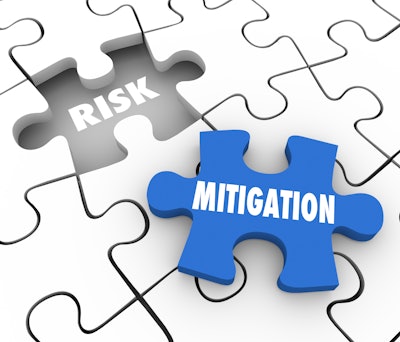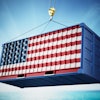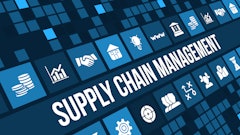
Supply chains are growing increasingly complex and face new threats daily, often requiring new resources, technology, or people to make them more resilient. For supply chain leaders to earn buy-in from executives and corporate boards, they must clearly connect resilience to business outcomes that matter most: risk reduction, financial performance, compliance, and operational excellence.
1. Risk mitigation: Protecting against disruption is a solvable problem
- Supply chain disruptions from escalating geopolitical tensions, supplier failures, natural disasters, and more are no longer hypothetical. They are frequent, costly, and inevitable.
- Risk is often hidden in sub-tiers of complex global supply chains. By mapping supplier networks and identifying single points of failure, leadership can prioritize investments in high-risk areas.
- The availability of more supplier risk data, combined with AI-driven analytics, allows companies to proactively identify and mitigate potential risks, greatly reducing the impact of disruption.
"While supply chain risks and challenges appear to be increasing, availability of data and signals to power decision making, has never been greater. This enables AI-driven technology to offer enterprises powerful capabilities to optimize their supply chains and mitigate risk. High-quality supplier intelligence plays a crucial role in this process, providing deeper visibility into risk factors and enabling effective decisioning,” says Ilya Levtov, founder and CEO of Craft.
2. Compliance: Avoiding regulatory risk, reputational damage, and penalties
- Non-compliance with environmental, sustainable, governance (ESG), forced labor, German Supply Chain Act, and other laws can lead to heavy fines, irreparable reputational damage, and loss of access to certain markets.
- Investing to ensure compliance now means the company can continue to meet evolving regulations in the future.
- Compliance is an opportunity to strengthen customer trust and protect competitive market position.
“Failure to comply with regulations relating to suppliers, such as Corporate Sustainability Reporting Directive (CSRD), or the German Supply Chain Act can result in significant fines. When you combine this financial cost with potential reputational damage and loss of customer trust, the combined effects can be devastating,” says Levtov.
3. Operational continuity: Uninterrupted delivery and happy customers
- Boards love customer retention and market share. Supply chain resilience makes sure the company can continue serving customers and retain its position even when disruptions occur.
- Operational continuity is a competitive advantage, as companies that recover faster win market share over competitors.
- Disruptions can erode customer trust and loyalty and make a company seem unreliable, leading to lost revenue.
- Resilience planning prevents failures that impact production, delivery, or customer satisfaction by shifting production to somewhere else or sourcing from another supplier.
- Draw up different scenarios to quantify potential losses from disruptions and show the financial benefits of resilience measures. Supporting data like the cost of downtime – and how it can be improved with a backup supplier – can significantly strengthen your argument.
“Supply chain and procurement organizations can deliver significant value to the enterprise by ensuring diversification in the supply chain, and existence of effective risk mitigation strategies. These elements contribute to increased resilience in the supply chain, and lower risk of interruption to production, at a time when supply chain disruption is a constant possibility,” adds Levtov.
4. Financial impact: Resilience protects revenue and decreases costs
- At the end of the day, resilience protects revenue.
- Boards respond better to clear ROI. Link resilience investments to measurable financial benefits.
- Demonstrate how resilience reduces large unexpected and emergency costs like expedited shipping, alternative sourcing, or penalties for missed deliveries.
- Show how data-driven decisions improve supplier negotiations and lower procurement costs.
“Building supply chain resilience is a key component of protecting revenue, and trust. Financial benefits of resilience may be the most obviously appealing to Boards, however, brand value and reputation with consumers and partners in market are also good justification for investing in supply chain resilience,” says Levtov.




















